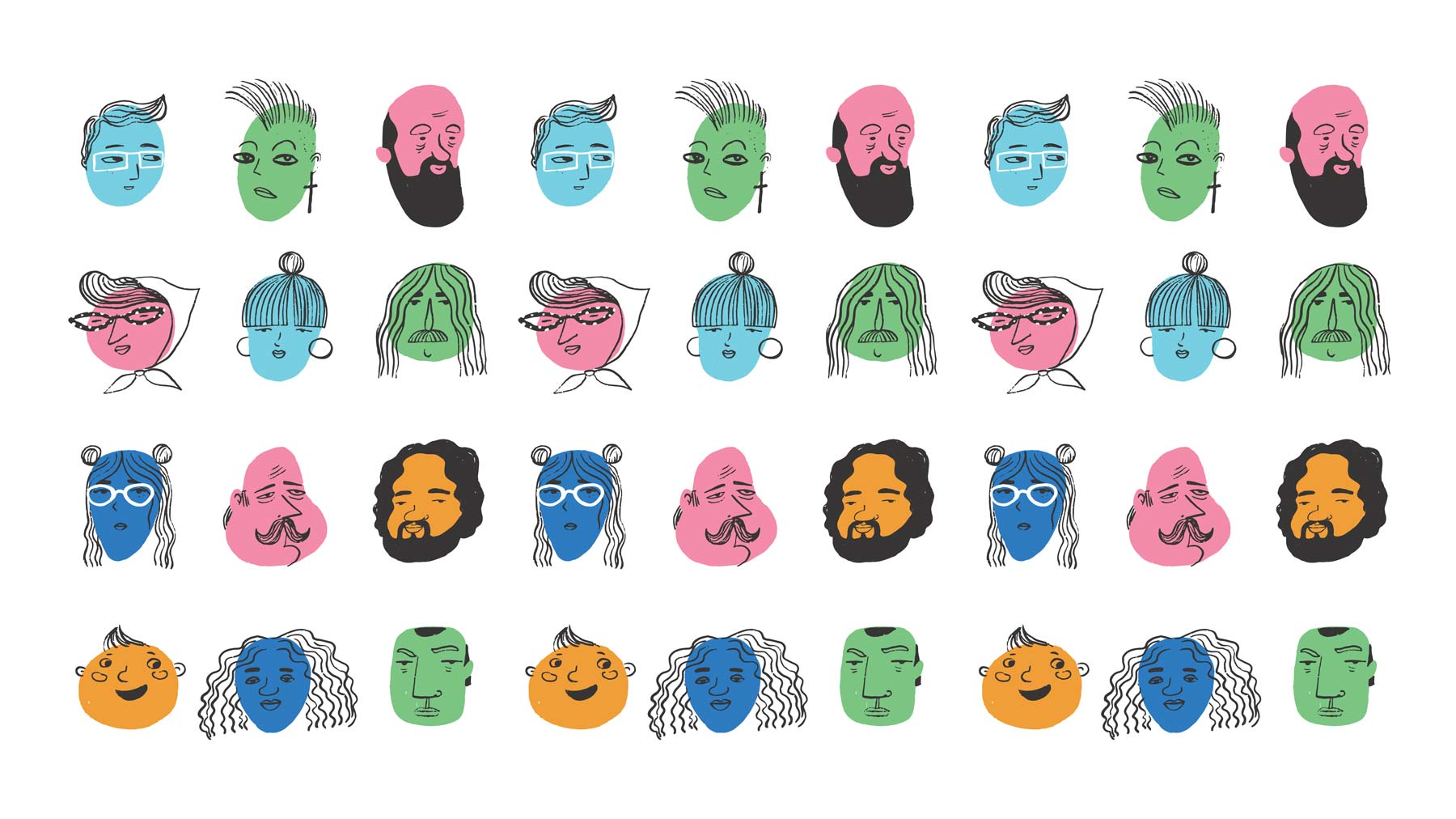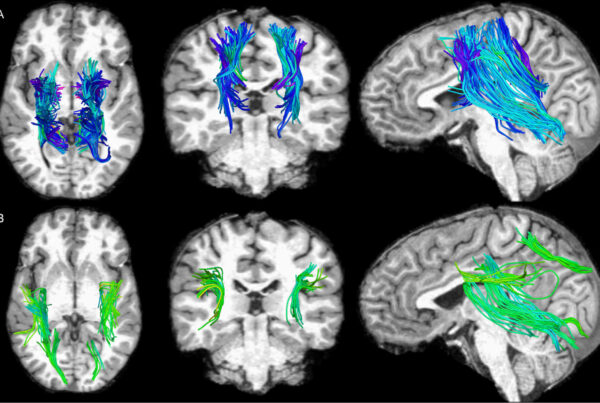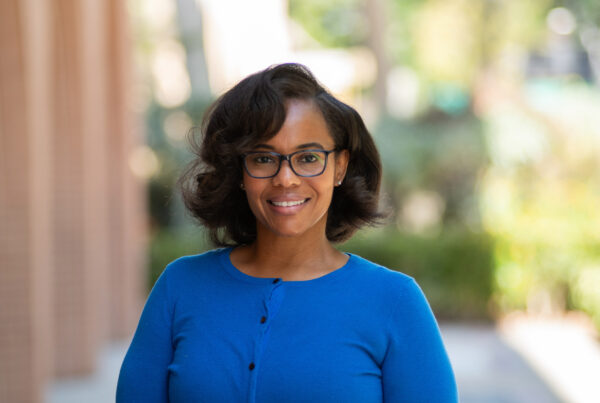When we study aging, who are we really studying? Men? Or women? Does it even matter?
Bérénice Benayoun believes it does. Nevertheless, she went into her latest experiment “agnostic,” she says. Her team treated macrophages (a type of immune cell) from older male and female mice with a pathogen-like molecule, then watched to see if they went after the intruder in the same way.
They did not.
“The male macrophages, we give them ‘pathogens,’ they eat them up normally, they do everything normally,” says Benayoun, an assistant professor of gerontology, biological sciences, biochemistry and molecular medicine at the USC Leonard Davis School of Gerontology. “But the female macrophages — oof. Let’s just say it’s kind of sad. They’re about 30% less good at taking up and clearing pathogens” than their male counterparts.
For years, Benayoun has grown frustrated watching researchers study only male subjects and then apply those findings universally to both sexes. Once, she recalls, a man described the reasoning to her face: “He said, ‘Females are just males with hormones.’”
Benayoun and other USC Leonard Davis School scientists are challenging that idea with new research investigating how the sexes age differently and asking what that might mean for physicians and patients alike. From how Alzheimer’s disease affects female and male brains differently, to the ways menopause affects the body and brain, to the very immune system itself, USC researchers are examining not only what we know but also, critically, what we don’t about how women age differently from men.
In 2014
the National Institutes of Health announced a policy requiring preclinical research projects to consider sex as an important biological variable in both animal and human studies.
6 in 10
people living with Alzheimer’s are women.
nearly 2x
as many women as men report significant side effects from prescription drugs.
51
is the average age of menopause onset in the U.S. Unlike men, who see a long-term, gradual decrease in their sex hormones, women experience a sudden drop at menopause.
Initially, Teal Eich wasn’t looking to track sex differences in her research. The assistant professor of gerontology and psychology at USC Leonard Davis is a cognitive neuroscientist who’s fascinated by memory and how it changes as we age. Then she noticed work other scientists were doing around the hippocampus.
The hippocampus is a part of the brain that’s critical in the formation of episodic memory, and it is hit early and hard by Alzheimer’s disease. People who are in early stages of dementia show signs of an overactive hippocampus when they are trying to remember something, studies show.
“But what causes this at the neuronal level?” Eich says. “Why are we getting this [result]?”
A 2017 study by University of Cambridge scientists pointed to a possible answer. Study subjects who had less of a neurotransmitter called GABA had a harder time suppressing unwanted memories than those who had more, the researchers found. Eich wondered whether these results held insights into the mechanisms of cognitive decline in older people.
So she organized a small pilot study of 20 individuals ages 50 to 71 — 11 of whom were women — and assigned them to tasks designed to challenge their memories. As the subjects did so, researchers measured GABA levels in their right hippocampus.
“We found GABA was dysregulated — but only in women,” Eich says. “The women who had less GABA had impaired memory, but [the neurotransmitter level] was pretty flat for all the men.”
That led Eich to her current study, where she’s looking at whether a decline in sex hormones in midlife through old age is associated with neurotransmitter levels and memory function in the hippocampus. The study overrepresents women, she says, because that’s the sex they’re most interested in for this topic. Hoping to gather more data about women and hormones over the life cycle, particularly as it relates to menopause, Eich went looking for comprehensive health surveys, and found none.
“There’s not a lot of interest in the middle-aged woman and what will happen based on her later in life,” she says. “It seems like this cavern. There’s this massive change that women go through, that we know must affect late life, and there’s just very, very, very little information.”
About 6 of every 10 people living with Alzheimer’s are women. While the waxing and waning of sex hormones may play an important role, Eich says, they probably aren’t the only reason for that statistic.
Eich’s colleague Christian Pike is also looking at the part genes play in the disease’s development. Working with mice that are genetically engineered to get Alzheimer’s, he’s created some that also carry the gene APOE4. That’s a human gene that increases the likelihood of Alzheimer’s disease in people. Other mice carry the more common version of the gene, APOE3, which is not believed to increase Alzheimer’s risk.
Not only was there a marked difference between the APOE4 and APOE3 mice, but the difference was particularly profound between the male and female mice, Pike’s lab found in a collaborative study with University Professor Caleb Finch.
“We can see, my gosh, the mice with APOE4, they’re much worse,” says Pike, professor of gerontology and assistant dean of research at USC Leonard Davis. “And if we look at males versus females, the females with the APOE4 are even worse” than the males with the same gene, he says.
This adds to Pike’s growing body of research showing that women appear to be more vulnerable to the disease than men. Other studies found that women with more typically feminine hands had a higher risk of developing dementia than those whose finger lengths more closely resembled a typical male’s. And, in a study with senior author Margaret Gatz, professor of psychology, gerontology and preventive medicine, women who had a male twin were found to have a lower risk of dementia in old age than women with a female twin, presumably due to the advantage conferred by male hormones in utero.
“There are these layers of differences between the sexes, and sometimes there are interactions between sex and genetic risk factors, even perhaps protective factors,” Pike says. “A lot of that is still remaining to be determined.”
Pike is working with Benayoun to take this lab research a step further. They are looking at the effect on their mice of certain drugs that the National Institute on Aging found increase lifespan in mice.
The APOE4 gene, which the researchers inserted into the mice, doesn’t just increase the risk of Alzheimer’s, Pike explains. It also leads to faster aging. But the drug he and Benayoun are working with, when given to the mice as they enter early middle age, essentially reverses that effect. However, the researchers have only tested the results in male APOE4 mice, as the previously published work from the NIA only showed delayed aging in male mice.
“When we look at what the drug does to them, on almost all measures it improves mice with APOE4 with modest or no effects on the mice with APOE3,” Pike says. “So, it’s like taking a longevity molecule.”
The vast majority of NIA’s longevity-enhancing drugs only work on male mice, Benayoun notes—perhaps because, for decades, scientists were not allowed to include women in Phase I and II drug trials, she says.
One reason, she says, was the fear that a woman could get pregnant during the trial and the drug could somehow damage the fetus. But “women know how to take measures to not get pregnant,” she says, and excluding them turned out to be dangerous as well.
“My guess is there’s a lot of drugs that right now are assumed to be working in women that just don’t work for them,” she says, “and drugs that failed Phase I and II [on male subjects] that would actually work if we had tested them in women.”
It’s probably not coincidental, Benayoun says, that nearly twice as many women as men report significant side effects from prescription drugs.
“As a scientist, when I started learning these things, I was kind of appalled,” she says.
If half of the human population is female, yet much of modern medicine is designed for men, “we are very poorly promoting the general health, well-being and longevity of women,” she says.
That has particularly profound implications, she says, when it comes to menopause — a major female life experience that has no male counterpart.
A male-centric view of menopause is that it’s just about the end of fertility, Benayoun says. In fact, “menopause is the single biggest life event in terms of health for a woman,” she says.
Unlike men, who see a gradual decrease in their sex hormones over the course of a lifetime, women experience a sudden drop at menopause. That puts them at risk for age-related illnesses that were not an issue before, Benayoun says. And scientists have found that the age at which a woman goes into menopause can help predict how long she’s going to live. (Hint: Earlier is not better.)
“Alzheimer’s, osteoporosis, cardiovascular events — all of these things, before menopause, they’re almost non-existent, and yet the incidence in women skyrockets after that,” Benayoun says. “Menopause is a huge thing.”
Determined to study the subject in the lab, Benayoun decided to create something she hadn’t seen before: menopausal mice. Almost no other animals besides humans experience menopause (the exceptions being killer whales and short-finned pilot whales). To put mice into something resembling menopause, Benayoun had to inject them with a chemical called VCD that over a period of time depletes the mice’s ovarian reserves.
This has been done before with very young rodents, but by using older mice (6 to 10 months old), Benayoun’s lab may have found a closer parallel to the human experience of menopause.
The results have not yet been published, Benayoun says, but if it works out, then her lab has a way to test potential treatments on mice. “We can see if such-and-such a treatment would help postmenopausal women,” she says. “Whereas now, we just don’t know.”
But aging in women (and men) is about more than hormones, as Benayoun found with her immune-response experiments.
The reason the macrophages in male mice outperformed those in females appears to be partially about hormones, she says. But some of it seems to be about genetics as well. Benayoun and her colleagues are trying to use what they’ve learned about the faster aging in the female cells to alter those cells so they are more resilient and capable, even at advanced ages.
If all goes well, one day soon her lab will be able to say, “‘Hey, we found something that’s very clearly not happening the same [between males and females], and we can tell you, at least partially, why it’s different,’” she says.
The findings would hardly be the last word in a decades-long debate about the wisdom of studying females. Still, Benayoun says, it would be nice to offer naysayers hard evidence of how wrong they are.
“Finding a female-specific effect vindicates the fact that we do need to study both men and women,” she says, “and that we’re probably making a lot of wrong assumptions about the state of things by just looking at males.”
Ultimately, the more scientists learn about the aging processes of both sexes, the more everyone benefits, she says.
“The goal is not to extend lifespan; it’s to extend healthspan,” she says. “And if we can increase that, both women and men will see a lot of benefit.”





